Contact us for quotation
Let's have a chat
Let's have a chat
Manufacturers frequently label their products as “dust-resistant” or “waterproof” to highlight their durability. However, these descriptions don’t fully convey the degree of protection they offer. To provide a more precise representation, manufacturers utilize IP ratings. But what exactly is an IP rating?
The IP rating for Ingress Protection is a standardized system as defined by International Standard EN 60529. It gauges how well electrical devices fend off foreign entities, such as dust, wires, and moisture, like water. The rating consists of two numbers: the first indicates protection against solids, while the second pertains to liquids.
The IP rating plays a crucial role when shopping for electronic items like light fixtures or LED strips. Below, I offer an in-depth guide to various IP ratings and their appropriate applications.
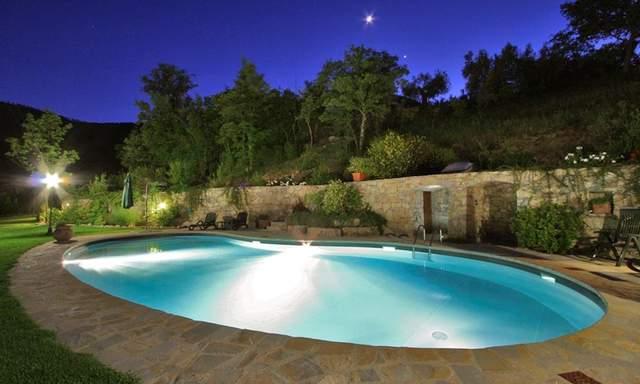
IP Rating stands for Ingress Protection. It defines the level of sealing effectiveness of electrical devices against intrusion from foreign bodies, like dirt and moisture. Generally, an IP rating has two digits. The first digit pertains to protection against solid objects, while the second addresses liquids. A higher number following the “IP” signifies more excellent protection. Sometimes, there’s an additional letter to provide further details, though it’s commonly left out.

The IP rating system is incredibly important, not only for the information it tells you about a light fixture but also because it is an international standard.
As for the first point, knowing the IP rating of a light fixture will help you decide if it is suitable for your needs. For example, if you want to place a light in a fountain, pool, or another underwater location, the IP rating will tell you if the light can handle that. Or, if you are in an industrial setting with fine particles in the air, the IP rating can confirm whether those particles will get into the fixture and ruin it.
Choosing the appropriate fixture for a space is important for several reasons. Most importantly, it keeps you and others around the light safe. You hopefully know that there is a major risk of electrocution if water and electricity mix. There is also a risk if dust enters a light and causes it to malfunction.
Using the right fixture also directly impacts how well it will work and how long it will last. This is incredibly important for your bottom line. After all, the more frequently you have to replace a fixture, the more money you will spend. There is also the chance that if it doesn’t work correctly, it could hurt productivity. For example, if workers can’t see labels clearly, it may take longer to find the right items. Or, if you are lighting a manufacturing plant, workers may have to be more careful (and therefore slower) if the light is dimmer.
As mentioned, the IP rating is an industry-standard across the world. This is especially important, as it lets you easily buy lights or other fixtures from another country without worrying about the description. There are no worries about translational errors. You also don’t have to take the time to learn numerous different rating systems. After all, without the IP rating, every country or even company could have its rating system.
Not only would it be more complicated to understand multiple systems, but it could also lead to unscrupulous companies taking advantage of that. For example, one company could use a rating system similar to that of another company but with lower standards per qualification. That could potentially mislead clients into thinking that the fixtures have better ingress protection than they do.
Having a universal system with a standardized IP rating prevents these issues. It makes it easier to buy fixtures internationally and ensures that you know the level of ingress protection of the fixture.
To break it down, an IP rating describes how well a device can ward off elements such as dust, water, and accidental touches. This standard applies to various electronic devices, including lights, phones, irons, TVs, etc.
The highest IP rating is IP69. This lets you know that the fixture is “dust-tight,” meaning no dust can enter the unit. This rating means that the light can handle high pressure and high-temperature water or steam in terms of water protection.
Keep in mind that some fixtures with an X8 or X9 rating will be hermetically sealed so no water whatsoever can get inside. This is most common. Sometimes, however, some water can get inside, but it will not negatively affect the fixture if it does.
The IP69K rating is the go-to choice for industries where frequent sanitization is necessary. It can handle high-pressure, high-temperature water used to sanitize food processing and other similar locations.
You are unlikely to need this IP rating unless you are in an industry where you regularly use high-pressure sprays with chemicals to clean the surfaces.
When you see an ‘X’ in an IP rating, it signifies a lack of specific rating information. If the ‘X’ replaces the first Digit, there’s no given protection against solids, like dust. When it’s in the place of the second Digit, the device lacks a specific rating for liquid protection.
For instance, IPX6 means the device can withstand water sprays but hasn’t been tested or rated against solid particle intrusion. Conversely, IP6X tells us the device is protected from substantial intrusion but lacks specific liquid protection data.
Every number and letter within the IP rating has a purpose. Each Digit represents a distinct level of protection.
1st Digit:
The IP rating’s initial Digit represents protection against solid objects like dust, hands, or various tools. Reliable defense is ranked using X, 0, 1, 2, 3, 4, 5, and 6, with each number symbolizing distinct protective characteristics.
| Effective Against | Protection Ingress |
| – | No data is available for specifying protection grade. |
| – | No protection against contact or ingress of solid |
| > 50 mm2.0 in | It is protected against larger body surfaces, but there is no protection if you intentionally touch it with a body part. |
| > 12.5 mm0.49 in | Protection against fingers or similar objects |
| > 2.5 mm0.098 in | Tools, thick wires, etc. |
| > 1 mm0.039 in | Most wires, slender screws, giant ants, etc. |
| Dust protected | Partial protection from dust; the dust can still enter |
| Dust-tight | Dust-tight. (No dust can enter. A fixture must withstand an eight-hour vacuum test.) |
2nd Digit:
The second figure in the IP rating details the enclosure’s ability to shield its inner components from different moisture forms, like splashes, drips, or immersion. The moisture protection scale includes X, 0, 1, 2, 3, 4, 5, 6, 6K, 7, 8, 9, and 9K. Each number, as with the initial Digit, signifies varying protection levels.
| Level | Protection Against | Effective For | Description |
|---|---|---|---|
| X | – | – | No data available |
| 0 | None | – | No protection on liquids |
| 1 | Dripping water | Vertical water drop will not affect when mounted at an upright position on the turntable and rotated at 1 RPM | Test duration: 10 minutes. Withstand Water: 1 mm (0.039 in) rainfall per minute |
| 2 | Dripping water when tilted at 15° | Vertical dripping water will not affect when the fixture/object is tilted at 15 degrees from the normal position | Test duration: 10 minutes ( 2.5 minutes in each direction). Withstand water: 3 mm (0.12 in) rainfall per minute |
| 3 | Spraying water | Water spray (with a spray nozzle or oscillation tube) up to 60 degrees from the vertical direction will not affect the fixture. | For Spray Nozzle: Test duration: 1 min/sq.m for at least five miniature volume: 10 liter/min Pressure: 50 -150 kPaFor Oscillating Tube: Test duration: 10 minster volume: 0.07 liter/min |
| 4 | Splashing of water | Water splashing (with a no-shield spray nozzle or an oscillating fixture) from any direction will not cause any harm. | For Spray Nozzle without shield: Test duration: 1 min/sq.m for at least five minor Oscillating Tube: Test duration: 10 min |
| 5 | Water jets | Water projection (with a 6.3mm nozzle) from any direction will not cause any harm. | Test duration: 1 min/sq.m for at least 3 minutes. Water volume: 12.5 liters/min Pressure: 30 kPa at a distance of 3 meters |
| 6 | Powerful water jets | Strong jets of water (12.5 mm) directed from any angle shall not cause damage | Test duration min/sq.m for at least three minutes volume: 100 liters/min Pressure: 100 kPa at a distance of 3 meters |
| 6K | Powerful water jet with high-pressure | Strong water jets (6.3 mm nozzle) directed at the enclosure from any angle at high pressure shall not cause any damage. | Test duration: 3 minutes (minimum)Water volume: 75 liter/min Pressure: 1,000 kPa at a distance of 3 meters |
| 7 | Immersion up to 1m | Harmful water ingress is not permitted when the enclosure is immersed in water (up to 1 meter of submersion) under defined pressure and time conditions. | Test duration: 30 min. The enclosure is tested with the lowest point 1,000 mm (39 in) below the water’s surface or the highest point 150 mm (5.9 in) below the surface, whichever is more profound. |
| 8 | Immersion on 1m or more | The object is capable of continuous submerging under manufacture-specified conditions. | Test duration: Manufacturer-specified depth, typically up to 3 meters |
| 9 | High temperature and High water pressure | Can resist high temperatures, high water pressure, and stream | Test duration: 30 seconds per position for small enclosures and 1 min/m^2 for at least 3 min for a large enclosure |
| 9K | Powerful high-temperature water jets | Safe from close-range, high temperature, and high-pressure spray-downs. | Test duration: Fixture: 2 min (30 sec/angle)Freehand: 1 min/sq.m, 3 min. Minimum water volume: 14–16 l/minWater temperature: 80 °C (176 °F) |

Extra Letters:
Any letter following the IP rating digits provides additional details based on product standards. While often left out in product descriptions, understanding these letters can enhance clarity regarding the protection grade.
| Letter | Meaning |
| A | Back of hand |
| B | Finger |
| C | Tool |
| D | Wire |
| F | Oil Resistant |
| H | High Voltage Device |
| M | Device monitoring during the device test |
| S | Device standing test during water test |
| W | Weather condition |
IP ratings gauge protection across three primary parameters:
| First Digit | Solid Ingress Protection | Second Digit | Liquid Ingress Protection |
| 0 | No protection | 0 | No protection |
| 1 | Protection from solids more significant than 50mm in diameter | 1 | Protection against vertical water dripping |
| 2 | Protection from the object over 12mm; fingers or similar object | 2 | Protection against vertically dripping water up to 15 degrees from its normal position |
| 3 | Protection from objects larger than 2.5mm in diameter | 3 | Water spray protection up to 60 degrees from a vertical position |
| 4 | Protection against solid objects over 1mm | 4 | Protects from splash weather irrespective of any direction |
| 5 | Partial protection against dust | 5 | Partial water jet protection at low-pressure |
| 6 | Total dust protection | 6 | Protection against strong water jets. |
| N/A | 6K | High-pressure water jet protection | |
| N/A | 7 | Protected in 1m water immersion; test duration is 30 min. | |
| N/A | 8 | Protected for long time water immersion | |
| N/A | 9 | Protection from high temperature, high water pressure, and stream |
As devices are used or installed, they may come into contact with other equipment or human touch. The IP rating offers insight into a device’s safety level or resistance to unintended user interactions. For instance, a rating of IP2X signifies protection against contact like a finger.
This metric focuses on a device’s safeguard against foreign objects such as dust or dirt. The IP rating’s first Digit indicates this protection level. For example, an IP6X rating means the device is completely protected from dust intrusion.
This component of the IP rating tells us about a device’s resilience against moisture or liquids. The second Digit provides this detail. For instance, IPX4 suggests that water splashes from any angle won’t negatively affect the device.
The IP rating system clearly indicates an electrical device’s capability to withstand challenging environments or weather scenarios. When equipped with this rating, consumers can confidently gauge the resilience of any equipment.
Often, manufacturers might label their products as water-resistant or dustproof, leaving ambiguity regarding the extent of their protection. However, an IP rating offers precise details about its defensive attributes. Take, for instance, a device labeled IP67. This indicates:
Therefore, when making a purchase, reviewing IP ratings to ensure you understand the product’s protective features is beneficial. Let’s say you’re considering outdoor LED lights. Given the potential exposure to elements like rain or storms, choosing devices rated IP67 or IP68 ensures maximum durability.
In conclusion, the IP rating system provides a detailed insight into the protective capacities of a device or fixture. Being informed about these ratings is pivotal in making an informed purchase.
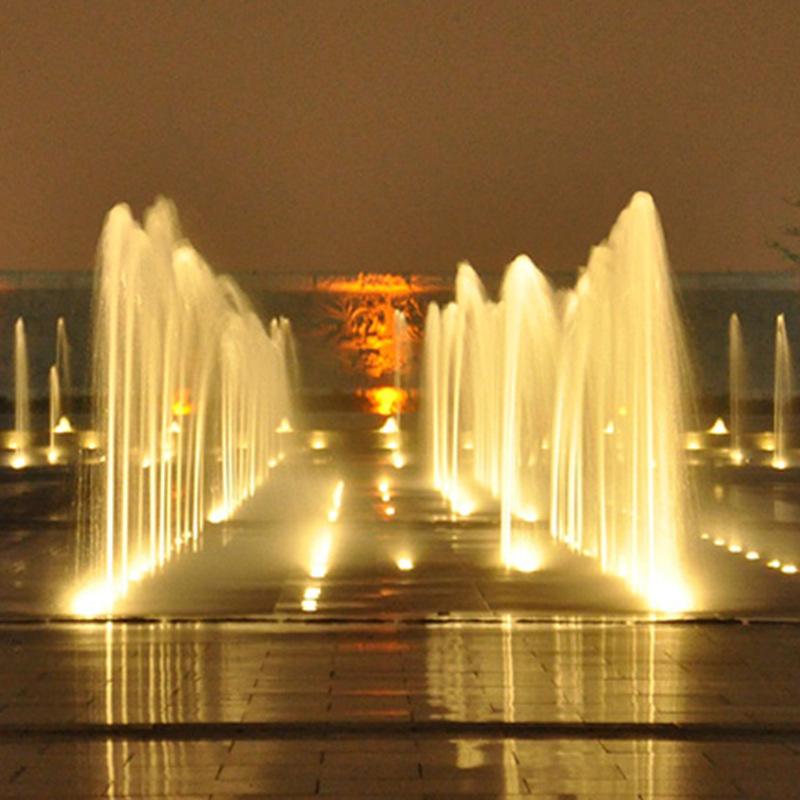
IP ratings indicate how well various devices guard their internal components. The following are typical products that feature IP ratings:
Lighting fixtures carry IP ratings to shield them from elements like dust and water. For instance, it’s essential for outdoor installations to pick lights that resist dust and water and can handle conditions like rain or extreme weather events. On the other hand, indoor lights generally don’t need such waterproofing.
Hence, the IP rating suitable for lights depends on their intended use and environment. Below are suggested ratings for diverse lighting situations:
| IP Rating | Appropriate Environment | Type Of Light |
| IP20 & IP40 | Indoors(relatively neutral environment) | LED linear lights, LED strips, etc. |
| IP54 | Indoor(partial dust and water resistant) | Bollard Lights, indoor LED lights, etc. |
| IP65 | Outdoor(tight-dust protected, can withstand rain) | Wall washer light, flex wall washer, bollard lights, LED strips, etc. |
| IP67 & IP68 | Outdoor(can submerge in water; ideal for the pool or fountain lighting) | LED strips, floodlights, etc. |
Enclosures with IP ratings are prevalent, catering to various needs from household to industrial applications. These often encase mechanical or electrical systems such as phone casings, instrument containers, etc.
Standing directly on the ground, these enclosures are more susceptible to water and insect exposure. Hence, IP ratings are crucial for them. A baseline IP43 rating is essential, ensuring protection against tools, wires, and tiny insects and resisting water sprays angled up to 60 degrees from vertical.
However, the ultimate IP rating required often relies on the contents within the enclosure. IP67 or IP68 is recommended for optimal protection, guaranteeing dust tightness and robust water resistance, and safeguarding your device.
These are versatile enclosures designed to safeguard a broad spectrum of electrical gear. They can be incredibly adaptable, housing various electronic devices, some even featuring keypad or lock systems. While the basic ones may not have IP ratings, those designed for outdoor or industrial applications often boast an IP65 or higher rating.
Designed for portability, handheld enclosures are compact and primarily focus on preventing unintended damage. Thus, they might have a relatively lower IP rating. However, those intended for outdoor use or damp settings will possess higher IP ratings. Examples of items in this category are voltmeter casings, digital thermostats, flow meters, and rugged phones.
Apart from the primary enclosures, their associated accessories also have IP ratings. These ratings are critical, ensuring the accessories maintain the enclosure’s integrity. Standard additions include adhesive feet, keypads, fasteners, brackets, and locking mechanisms.
In addition to various enclosures, many other products utilize the IP rating system to indicate their protection levels such as wall boxes, instrument casings, and power supply containers.
Thus, the IP rating is a significant consideration for nearly all electrical devices. It’s essential to take it into account when buying fixtures or appliances.
The required IP lighting ratings differ based on placement and intended function. Therefore, lights are assigned specific IP ratings that make them suitable for their environments. Here’s a breakdown of the ideal IP ratings for different LED lighting applications:
Indoor lights generally aren’t exposed to significant amounts of dust or moisture. As such, a rating of IP20 is typically sufficient for such settings, safeguarding against intrusions like fingers. However, for bathrooms, a higher IP rating is needed due to the presence of moisture.
For bathroom settings, it’s essential to select lights with the correct IP ratings, given their frequent exposure to water. Bathrooms can be categorized into four distinct zones, with IP rating necessities for each zone detailed as follows-
So, get a proper idea about your bathroom zones and choose the safe fixture.
| Zones | Refers To | Ideal IP Rating | Description |
| Zone-0 | Inside Shower OrBath | IP67 | This zone gets submerged frequently or temporarily, requiring a water-resistant fixture. |
| Zone-1 | The area directly above the shower or bath(up to 2.25 meters tall) | IP44 or IP65 | The area above the shower remains far from water, so a minimum of IP44 or 65 is enough. |
| Zone-2 | Outside the shower or bath (up to 0.6 meters away) | IP44 | Similar to zone-1, this area remains away from direct moisture contact. |
| Outside The Zones | Any area that doesn’t fall under zone-0,1, and 2. | IP22 (at least) OrIP65 (analyzing contact with moisture) | Areas outside the bathroom zones should have at least an IP22 rating. Yet, experts suggest going for IP65 when installing fixtures for the bathroom. |
Outdoor security lights are frequently exposed to challenging weather conditions such as heavy rainfall, storms, and thick dust. It’s crucial to choose a light fixture with an appropriate IP rating. For most locations, IP44 – IP68 would be suitable. However, IP68 is the best outdoor option, offering complete dust protection and water resistance.
Selecting the perfect fixture for street lighting means considering its potential exposure to elements like dust, wind, and rain. Institutions with a higher IP rating will robustly guard against street dust and rainfall. Aim for a minimum of IP65, though IP67 or IP68 would be optimal.
The ideal IP rating for garden lights depends on their placement. If your light fixture is situated in a more protected spot, shielded from the harshest elements, IP54 should suffice. However, an IP65 rating or above is recommended for directly exposed institutions.
For areas like outdoor pools or musical fountains, it’s essential to have waterproof lighting. When selecting the perfect fixture, understanding the distinctions between IP65, IP67, and IP68 will guide you to the most suitable choice.
| Water Resistance Limits | IP65 | IP67 | IP68 |
| Resist Water | Yes | Yes | Yes |
| Handle Rain | Yes | Yes | Yes |
| Water Spray | Yes | Yes | Yes |
| Submerge in Water | No | Yes (On 1m depth only and for a short duration) | Yes (Deeper than 1m, stays longer than 10min) |
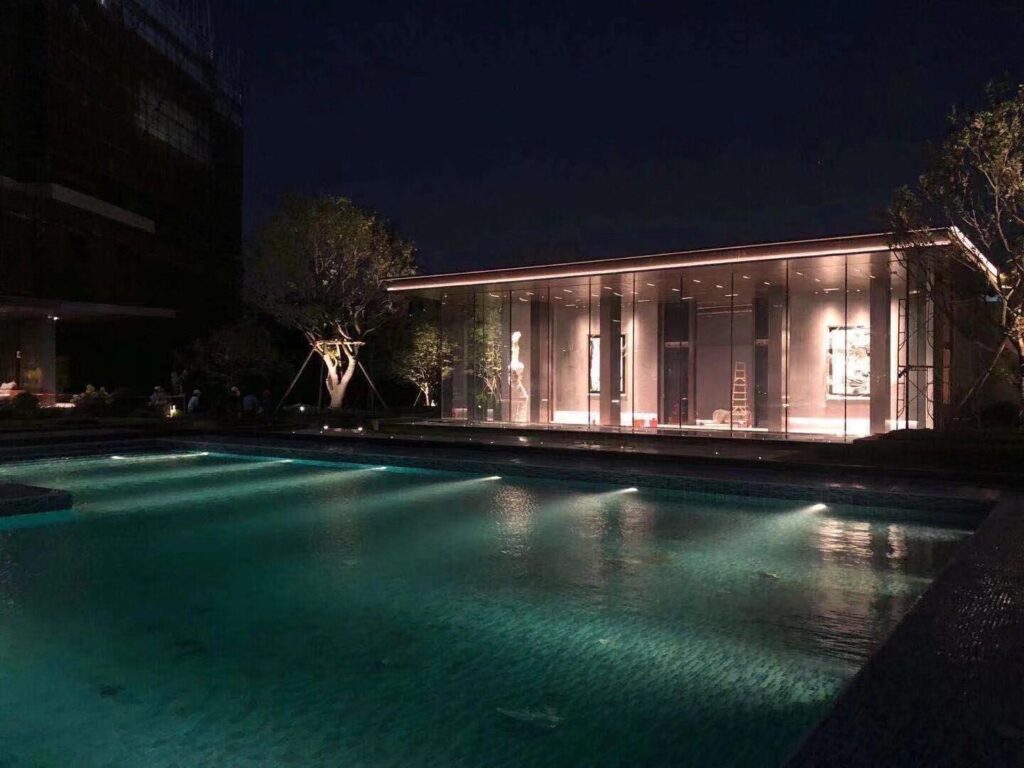
Before purchasing LED strips, understanding the range of IP ratings is crucial. Here’s a concise overview of the maximum and minimum IP ratings for LED strips:
IP68 is the pinnacle of protection for LED strips. An LED strip with this rating offers:
Given this rating, IP68 LED strips can illuminate various settings, including pools, underwater zones, bathrooms, and outdoor spaces like streets and walls.
An LED strip should ideally possess an IP rating of at least IP20. This ensures the strip’s protection against larger objects (over 12.5 mm), such as fingers. However, these strips aren’t protected against dust or water.
Consequently, IP20-rated LED strips best suit indoor environments like bedrooms, offices, and living rooms.
When it comes to LED strips:
Opt for a lower IP rating for indoor spaces and a higher IP rating for outdoor or industrial usage.
The versatility of LED strips, suitable for indoor and outdoor applications, is primarily dictated by their IP rating. Here’s why considering IP ratings is pivotal:
In conclusion, paying attention to IP ratings is a fundamental step when selecting LED strips for your desired application.
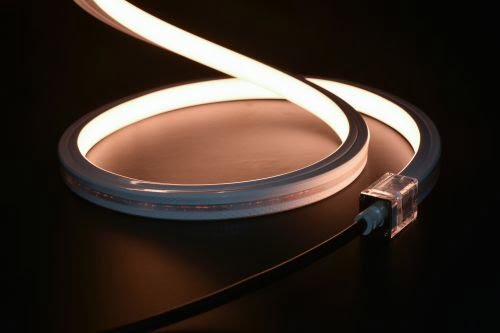
IP44 and IP65 ratings guarantee protection from objects, accidental touches, and tools. However, which stands out? Here’s a comparison:
Upon comparison, IP65 proves to offer more comprehensive protection than IP44.
IP55 and IP65 defend equally against liquid ingress, ensuring no harm from water jets. Their primary difference lies in protection against solid particles:
Given the superior dust resistance, IP65 stands above IP55.
IP55 and IP66 vary in their levels of solid and liquid ingress protection. Delving into their specifics:
Considering these attributes, IP66 offers more robust protection compared to IP55.
To discern the better choice between IP55 and IPX4, consider the following points:
Given its dual protection prowess, IP55 trumps IPX4.
To determine which is superior between IP67 and IP68, it’s essential to understand their commonalities and distinctions. Here’s a breakdown:
Upon comparing the two, IP68 emerges as the more robust option than IP67.
While IP68 and IP69 offer the same protection against solids, they differ significantly in their liquid ingress protection capabilities.
IP69 provides resistance to high-temperature water, intense water pressure, and washdowns. It’s a preferred choice for environments needing rigorous sanitation, such as pharmaceuticals, chemical production, and food and beverage processing. This is why devices in these industries often carry the IP69 rating.
On the other hand, IP68 is designed to handle continuous submersion under specified conditions, typically up to at least 1 meter deep for 30 minutes or longer.
Though IP69 offers the utmost protection against liquids, it’s often deemed excessive for many uses. IP68, however, is more widely adopted for general-purpose items, like lights and LED strips. IP69, in comparison, is ideal for equipment that undergoes frequent high-pressure washdowns. The choice between IP69 and IP68 ultimately depends on the intended application.
A higher IP rating signifies enhanced protection from solid and liquid intrusion. Devices or LED strips with elevated IP ratings can endure challenging conditions, such as heavy rainfall, storms, and dust, allowing their use in various environments without the fear of damage.
For instance, an IP68-rated LED strip is suitable for underwater applications, making it perfect for musical fountains, swimming pools, and bathtubs.
Conversely, devices with a lower IP rating might not offer complete protection against water and dust, making them less suited for harsh environments or outdoor use.
In conclusion, a superior IP rating ensures more excellent protection, making it a preferable choice.

Water resistance in LED strips, often denoted by an IP rating, is crucial due to the following factors:
LED strips serve multiple functions, both indoors and outdoors. This versatility exposes them to a range of environmental conditions. An IP water resistance rating ensures they remain durable in such situations. Furthermore, an IP68 rating offers comprehensive protection against water. Such LED strips can be safely utilized in submerged settings like swimming pools, bathtubs, and decorative fountains.
Water resistance isn’t just a benefit for outdoor illumination – it’s essential. LED strips having IP ratings such as IP65, IP67, and IP68 can fend off water to varying degrees. For instance, while IP65 is designed to manage low-pressure water jets, IP67 and IP68 are optimized for conditions like heavy rainfall.
The International Electrotechnical Commission (IEC) standardized the IP rating system under Standard 60529. This globally accepted system empowers businesses and customers worldwide to choose water-resistant LED strips confidently. In conclusion, considering their IP water resistance rating is indispensable when picking LED strips for any task.
Before delving into the specifics of IP ratings, it’s vital to clarify the term ‘waterproof.’ Indeed, waterproof devices are entirely impervious to water penetration. However, we frequently conflate ‘waterproof’ with ‘water-resistant’ (which denotes limited protection against water). For instance, IP68 is deemed waterproof – it prevents water from infiltrating and can even be submerged based on the manufacturer’s guidelines. Conversely, ratings like IP65, IP66, and IP67 are water-resistant, offering partial protection against water but not absolute immunity.
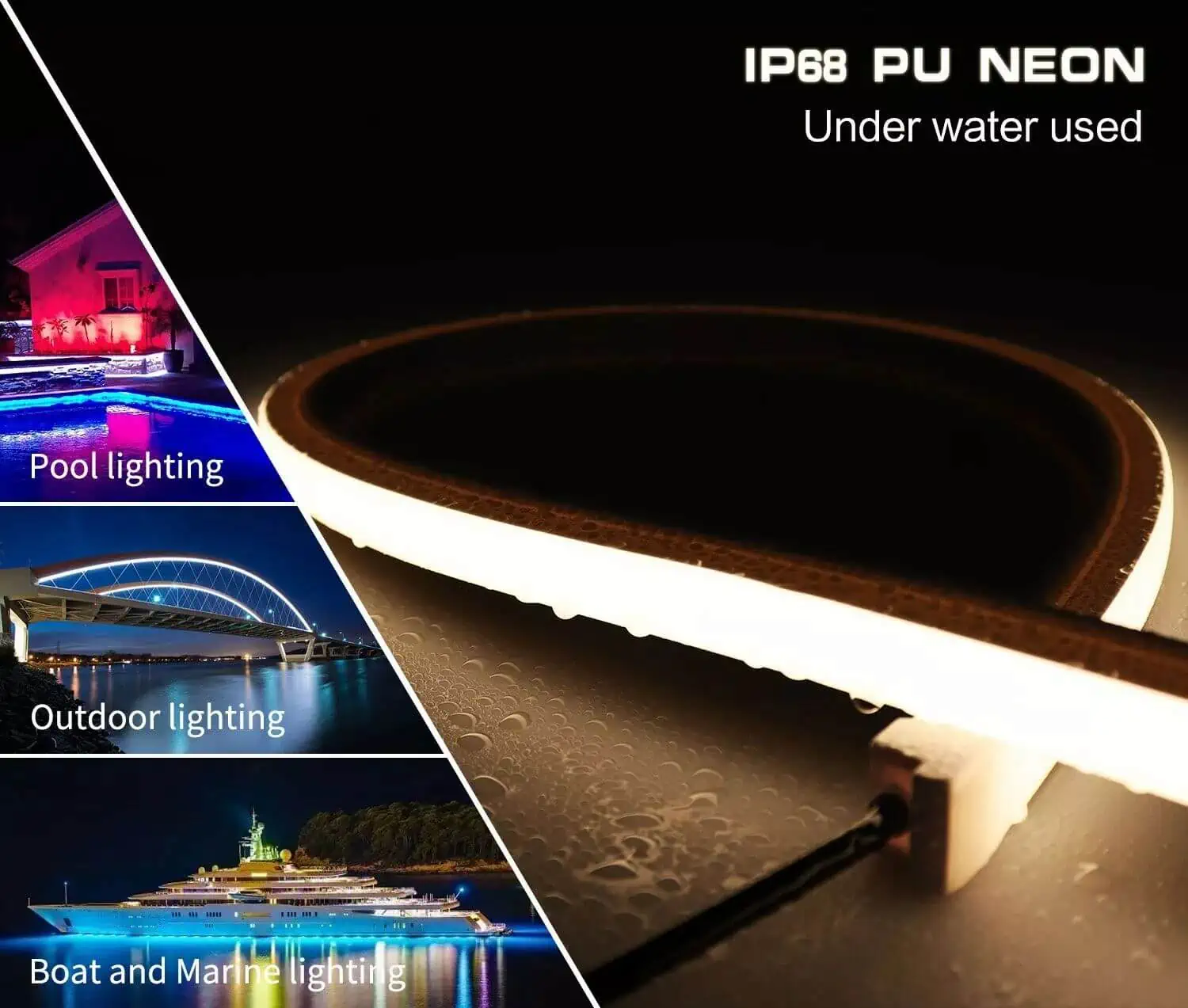
A product with only one IP rating indicates that it has cleared tests up to the mentioned standard. For instance, an IP67-rated LED strip has passed all tests up to the IP67 level, including all lower ratings.
However, certain products might showcase multiple IP ratings. For instance, a rating of IP55/IP57 suggests the product cleared tests up to IP55 and passed IP57 tests but couldn’t clear the IPX6 test. Such multi-ratings are frequently observed in mobile devices.
Another example is the IP68M and IP69K ratings, where the product has successfully cleared both assessments.
Testing for IP ratings involves specialized equipment, with various tests for different ratings. The tests generally fall into two categories: pushing against solids like dust and liquids.
This test measures a product’s resilience against dust accumulation. Typically required for medical and electronic devices prone to dust, the outcomes dictate the rating. If a product’s functionality remains unaffected by dust, it’s awarded the IP5X rating. A tight dust protection outcome results in an IP6X rating.
This test gauges a product’s defense against water from sprays, splashes, or total immersion. For example, a product tested for IPX4 will undergo oscillating spray exposure for a minimum of 10 minutes. If it experiences minimal water penetration without any detrimental effects, it passes. Similarly, a product earns an IP67 rating when submerged in 1 meter of water for 30 minutes without experiencing damage.
Advanced equipment, like MyLikeLed’s “IP3-6 Integrated Waterproof Test Chamber” and “IPX8 Flooding Pressure Testing Machine”, are employed for precise water resistance tests on products like LED strips.
IP ratings play a crucial role in determining the durability of electronic devices against solid and liquid intrusions. This is equally pertinent for LED strips.
This rating informs users about the resilience of an LED strip in challenging environments, aiding in decision-making about its placement. For instance, LED strips with lower IP ratings are more suited for indoors, while those with higher ratings are fit for outdoor use.
MyLikeLed offers top-notch LED strips across various IP ratings. Our state-of-the-art testing labs include the “IP3-6 Integrated Waterproof Test Chamber” and “IPX8 Flooding Pressure Testing Machine” to ensure precise IP assessments. Our LED strips range from P20/IP52/IP65/IP67/IP68, and MyLikeLed’s skilled team can also cater to tailored needs for different IP ratings. Reach out to MyLikeLed for your ideal LED lighting solution.
An IP rating has two digits: the first indicates protection against solids (0–6), and the second shows protection against liquids (0–9). For example, IP65 means it’s dust-tight and protected against water jets.
IP rating is important because it helps you choose the right fixture for the environment. For example, outdoor lights need a higher IP rating to handle rain and dust.
For outdoor use, an IP65 or higher rating is recommended. It ensures the light is weatherproof and safe from dust and water splashes.
Yes, IP44 is often suitable for bathrooms, especially away from direct water sources. But in areas near showers, a higher rating like IP65 may be safer.
The highest commonly used IP rating is IP69K, which provides complete protection against dust and high-pressure water, often used in industrial settings.
Yes, IP-rated lights can be slightly more expensive, but they offer better protection and long-term durability, especially in wet or dusty environments.

Hi, I’m Xylia Xiong, a sales professional with 14 years of experience in the LED strip light industry. I specialize in providing tailored solutions, leveraging my expertise in LED products and the latest industry trends. Known for effective communication and problem-solving, I’m dedicated to helping lighting manufacturers, importers, and distributors achieve their goals.
Let’s work together to create customized solutions that exceed expectations.


